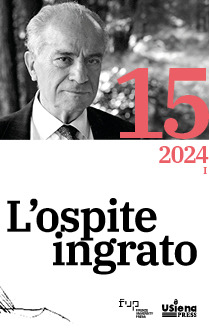Forme della paralisi, forme dell’impegno: una lettura stilistica della Giornata d’uno scrutatore di Italo Calvino
Published 2024-07-18
Keywords
- style,
- dialectical materialism,
- engagement,
- bildung,
- paralysis
How to Cite
Copyright (c) 2024 Margherita Martinengo

This work is licensed under a Creative Commons Attribution 4.0 International License.
Abstract
The article presents a stylistic analysis of Italo Calvino’s La giornata d’uno scrutatore. It first explores the characteristics of the narrator (autobiographical matrix, relationship with the protagonist) and the function of parentheses, undoubtedly the most typical stylistic element of the work. The analysis highlights how La giornata d’uno scrutatore is supported by a binary and symmetrical principle, which affects both the content and the form of the narrative discourse; this principle is interpreted as a certification of the failure and of the impossibility of interpreting reality according to a dialectical (triadic) mechanism. The work finally follows the protagonist’s development. Amerigo Ormea initially appears to be stuck in a state of paralysis, but in the end, the only one among the protagonists of the Cronache degli anni Cinquanta, he becomes capable of defining a space, albeit limited, in which reason and ethically oriented action exist, opposing (aware of the limitations of his own action) the practice of electoral fraud at the “Cottolengo”.

